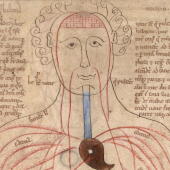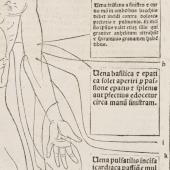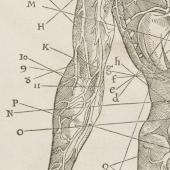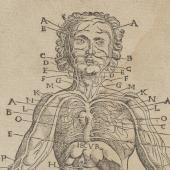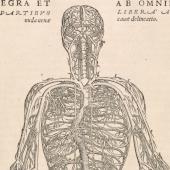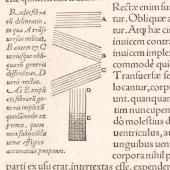Veins and arteries
Vivitur ingenio
According to Galen, the human body had two types of blood vessels. One set (the veins) arose from the vena cava (originating in the liver) and carried blood and nutriments. Another set (the arteries) from the aorta (originating in the left ventricle of heart) carried blood and a vivifying spirit. Blood (a mixture of the four humours, namely blood, phlegm, black bile, and yellow bile) was made in the liver from the ‘chyle’ extracted from food in the alimentary tract. Blood ebbed and flowed continually through the blood vessels and was delivered all over the body where it was consumed. Some of the venous blood that entered the right ventricle of the heart shed impurities that were then carried by the pulmonary vein to the lung and exhaled. Furthermore a small amount of venous blood seeped in from the right ventricle to the left ventricle of the heart (the heart was believed to have only two ventricles), and was there mixed with the spirit inhaled by the lung, creating a ‘vital’ spirit that vivified the body. Because disease was believed to be an imbalance or stagnation of the humours, blood-letting was regarded as an important form of treatment. Though it was possible to let blood from arteries, it was generally considered too dangerous, and blood was normally let from veins. This meant that the course of veins was studied much more closely than that of the arteries.
